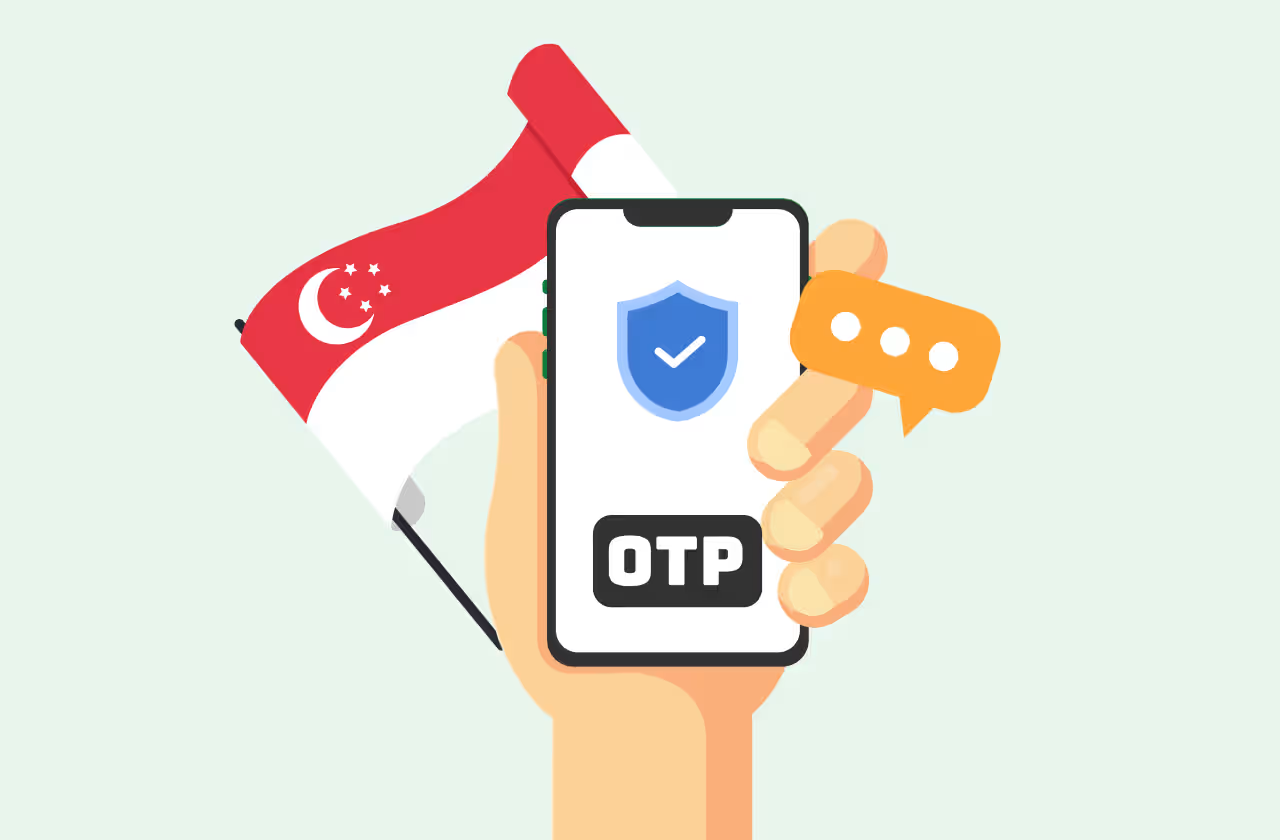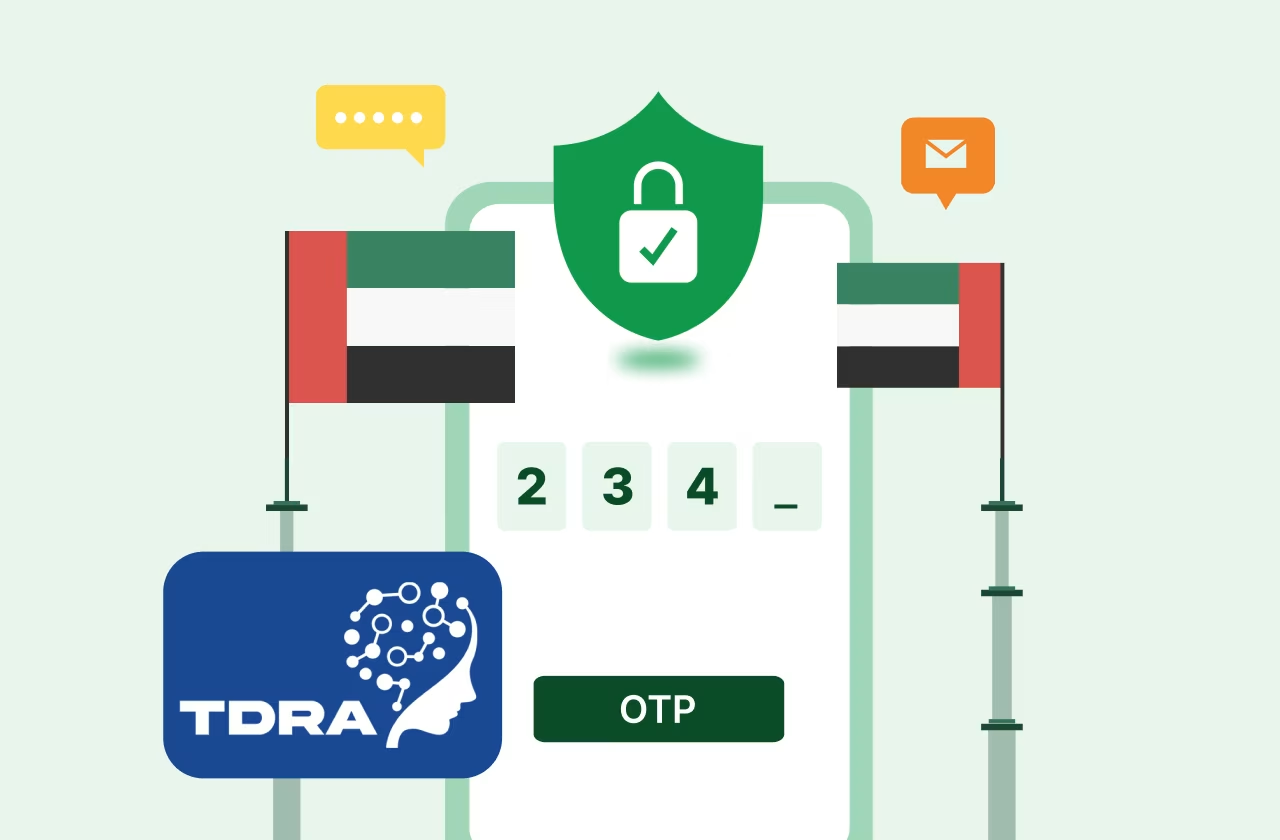Key Takeways
According to a report, SMS authentication traffic is expected to grow by 4% in 2024. SMS authentication has emerged as a popular method for verifying user identities, adding an extra layer of security beyond traditional passwords.
However, as cyber threats become increasingly sophisticated, many are questioning the effectiveness of this method.
What is SMS Authentication?
SMS authentication is a popular way to verify user identities through SMS-based two-factor authentication (2FA) or SMS one-time password (OTP).
It sends an SMS verification code to your phone to confirm your identity. However, as hackers become smarter, the security of this method is being questioned.
Advantages of SMS Authentication
Here are some advantages of SMS authentication
- Better Security than Passwords
Passwords can be weak because people often use the same ones for different accounts or fall for phishing scams. SMS authentication adds an extra step to confirm your identity, making it harder for hackers to break into your account.
- Easy and Familiar
Managing many passwords can be difficult. SMS authentication makes things easier by sending a special code straight to your phone, making the login process quicker and simpler.
- Safer than No 2FA
Although SMS authentication isn't perfect, it's much safer than using just a password or no extra security at all. Having more than one way to confirm your identity helps keep your account more secure.
You can setup 2FA for your business with Message Central. The platform provides OTP on multiple channels including SMS, WhatsApp, RCS etc.
Risks Associated with SMS Authentication
Here are some risks associated with SMS authentication
- SIM Swapping and Hacking
Cybercriminals can take advantage of weaknesses in mobile networks to intercept SMS messages. They might use methods like SIM swapping, where they trick the service provider into moving your phone number to their device or SIM hacking, where they spoof cell tower signals to get your messages. This gives them access to your authentication codes.
- Lost or Stolen Devices
Many people lose their phones or have them stolen. If someone gets your device, they might access your text messages with authentication codes. This puts your accounts at risk, especially if your data is synced across multiple devices.
- Social Engineering Attacks
Scammers can use tricks like phishing to fool people into giving away sensitive information, including SMS authentication codes. If they get this information, they can access your accounts without permission.
You can read our article for detailed guide on SMS phishing for more information.
- Online Account Takeover
Some mobile service providers let you view your text messages online. If these accounts don’t have strong security, hackers can gain access and see your SMS codes, which can lead to account takeovers.
- Cost Issues
Using SMS authentication can be expensive for businesses because they have to pay for each message sent. Costs can add up, especially if they send a lot of messages. However, Verify Now allows you can test SMS verification service for free in few simple steps.
Is SMS Authentication Secure?
Below are the reasons why SMS authentication may or may not be secure for your business
- User Familiarity and Convenience
SMS authentication is popular and user-friendly, making it a convenient choice that encourages the adoption of two-factor authentication and improves overall account security.
- Vulnerability
SMS authentication adds extra security but isn’t completely safe. It has vulnerabilities that can be exploited by hackers.
- Popularity
Despite the risks, many people and organizations continue to use SMS authentication because it is easy to set up and familiar to users.
- Evolving Cyber Threats
As cyber threats grow and change, businesses need to rethink their use of SMS authentication and look for stronger security options.
- Immediate Code Delivery
SMS codes are sent directly to the user's phone, making them hard for attackers to intercept without physical access, thus providing timely verification during logins.
Some Alternatives to SMS Authentication
Some Alternatives to SMS Authentication are
- Web Authentication
- Web Authentication is a new standard that makes user authentication easier and safer.
- It uses public-key cryptography to protect against phishing attacks, making it a very secure option.
- It supports passwordless logins, which enhance user convenience.
- This method allows users to authenticate using biometrics, such as fingerprints or facial recognition, for added security.
- It eliminates the risk of password reuse, which is a common vulnerability in traditional login systems.
- Mobile Authenticator Apps
- Instead of OTP SMS, authenticator apps generate one-time passwords (OTPs) for logging in.
- When you log into a site or app, the authenticator app provides a code to enter or sends a notification to approve or deny the login.
- These apps are more secure than SMS because they don’t rely on your phone's cellular service.
- The codes they generate expire within a few minutes, reducing the risk of theft.
- Mobile authenticator apps often support multiple accounts, allowing users to manage all their logins in one place.
- They add an extra layer of security by requiring users to have physical access to their device to generate the code.
- Biometric Authentication
- Biometric authentication uses unique physical characteristics, like fingerprints, facial recognition or iris scans for user verification.
- It provides a highly secure method of authentication since biometric data is unique to everyone.
- Users find biometric authentication convenient, as they can easily unlock their devices or log into accounts without remembering passwords.
- Biometric systems are often integrated into devices like smartphones and laptops, making them easily accessible.
- Hardware Security Keys
- Hardware security keys provide an extra layer of security by requiring a physical device for login.
- Users must insert the key into their device or use it via bluetooth to authenticate, making it very difficult for attackers to gain unauthorized access.
- Hardware keys are resistant to phishing and man-in-the-middle attacks since they work with public-key cryptography.
- They support multiple protocols, making them compatible with various online services and applications.
- Email-Based Authentication
- Email authentication sends a verification link or code to the user's registered email address when logging in.
- This method of digital identity authentication provides an additional layer of security by ensuring that users have access to the registered email account.
- Email-based authentication is easy to implement and doesn't require users to download additional apps or hardware.
- Push Notification Authentication
- Push notification authentication sends a request to the user's mobile app to approve or deny a login attempt.
- This method is user-friendly, as it allows users to quickly respond to login requests without entering codes.
- Push notifications are more secure than SMS because they use encrypted channels and don’t rely on cellular networks.
- Users can see the request details, including the login location and time, allowing them to identify any unauthorized attempts.
- Single Sign-On (SSO)
- SSO allows users to log in once and gain access to multiple applications or services without re-entering their credentials.
- SSO solutions can integrate with multi-factor authentication (MFA) methods, enhancing security.
- This approach simplifies the login process for users and reduces password fatigue by minimizing the number of passwords they need to remember.
- It helps organizations improve security by enforcing strong authentication policies across all connected applications.
- Silent Network Authentication
- Silent network authentication relies on mobile data to leverage GSM authentication.
- When a user triggers SNA, the mobile application establishes a mobile data session on the device.
You can read more in our detailed coverage on silent network authentication.
Conclusion
In conclusion, while SMS authentication provides a convenient and widely accepted method for verifying user identities, it is essential to recognize its limitations and vulnerabilities.
Balancing ease of use with security is crucial for protecting sensitive information. Organizations should consider enhancing their security measures by exploring alternative authentication methods alongside SMS authentication.
SMS Authentication with Message Central
Verify Now by Message Central is an OTP SMS verification platform trusted by businesses across 70+ countries. The platform provides: -
- Global connectivity for worldwide user authentication with SMS.
- Developer friendly easy to use APIs.
- Real time data analytics to monitor
- 24/7 customer support
- The best SMS routes and competitive rates
You can simply signup to try for free or get in touch for any custom needs.










